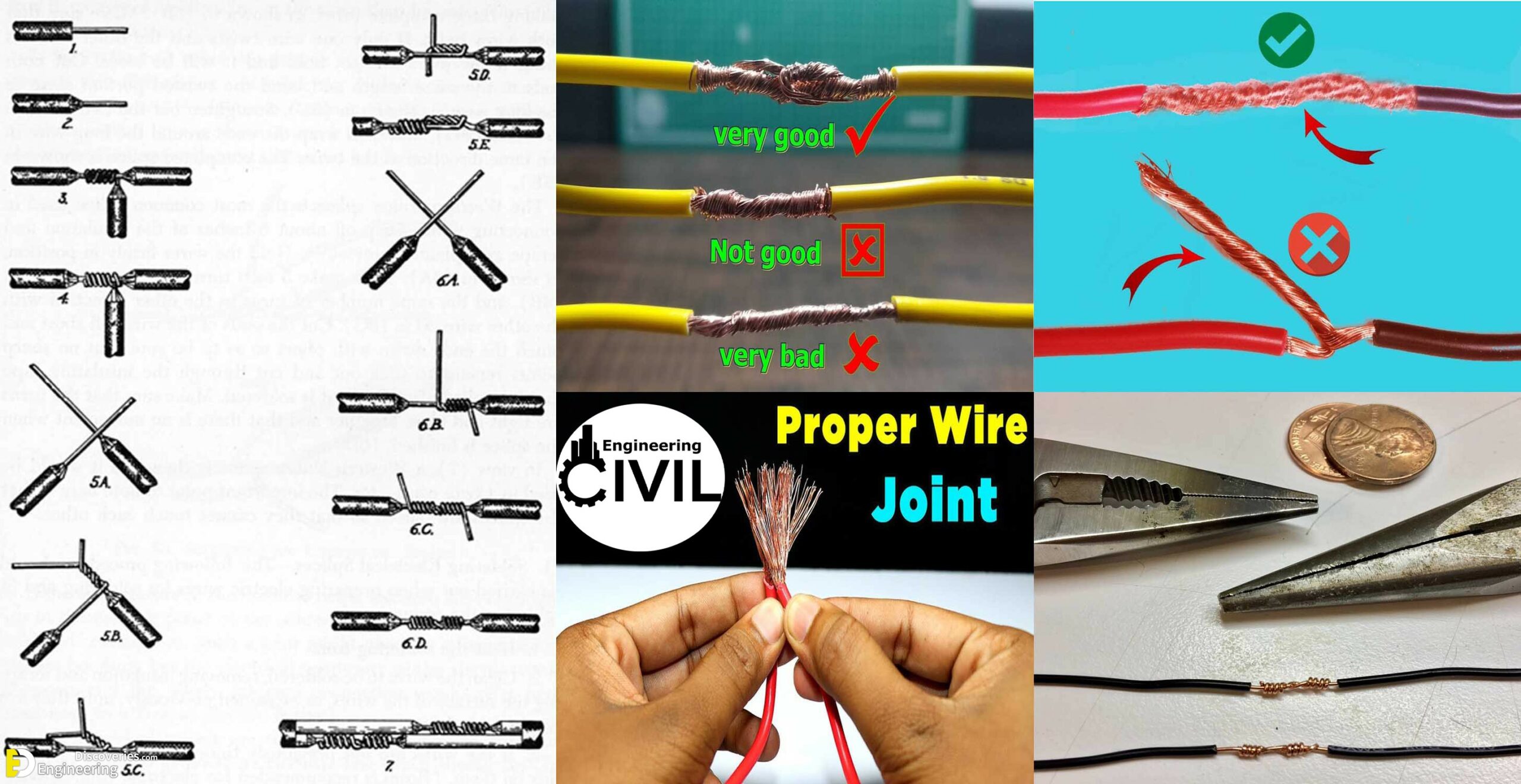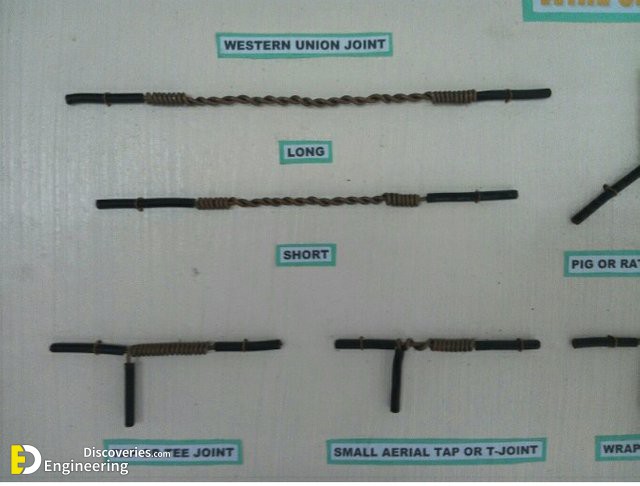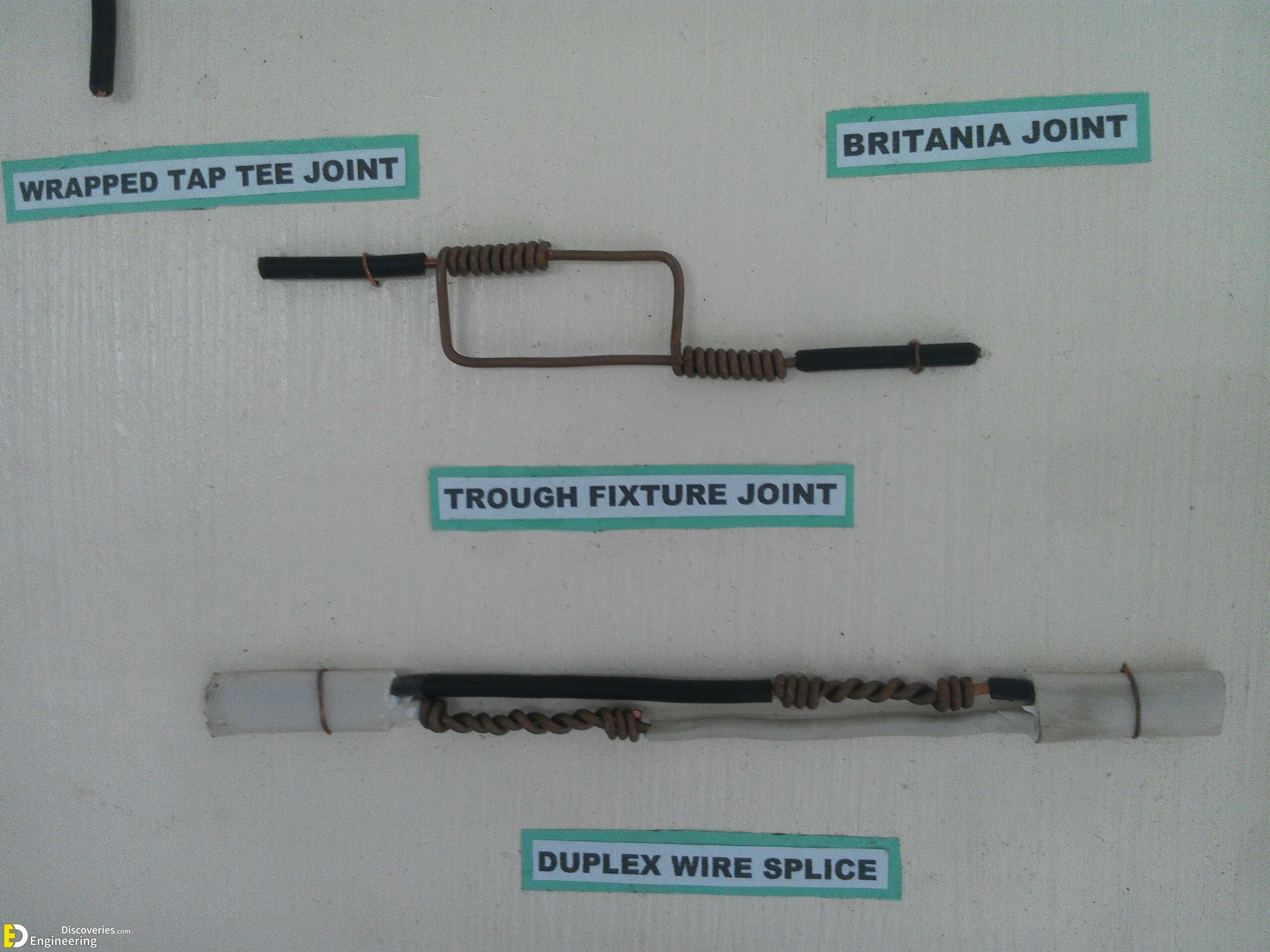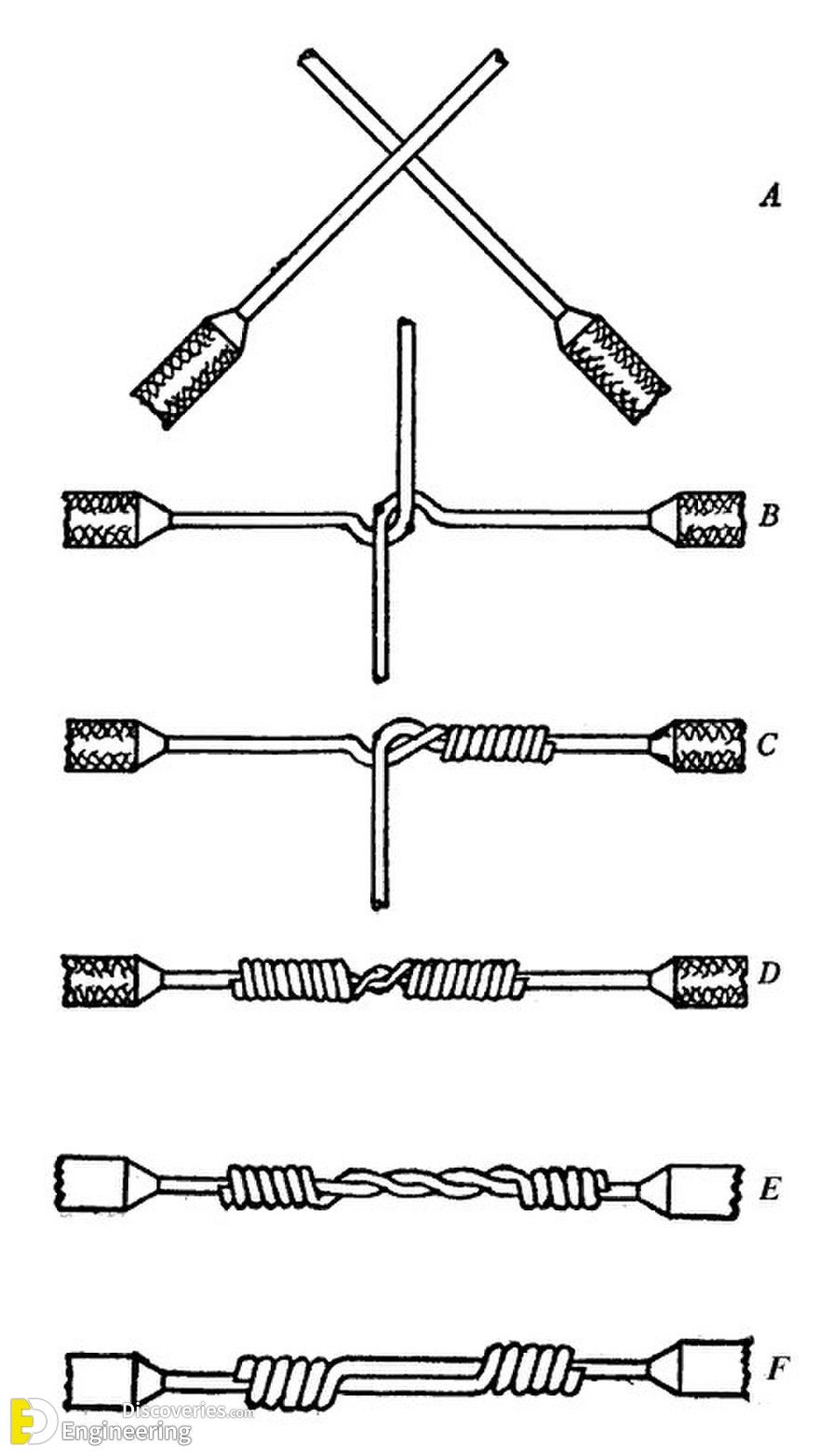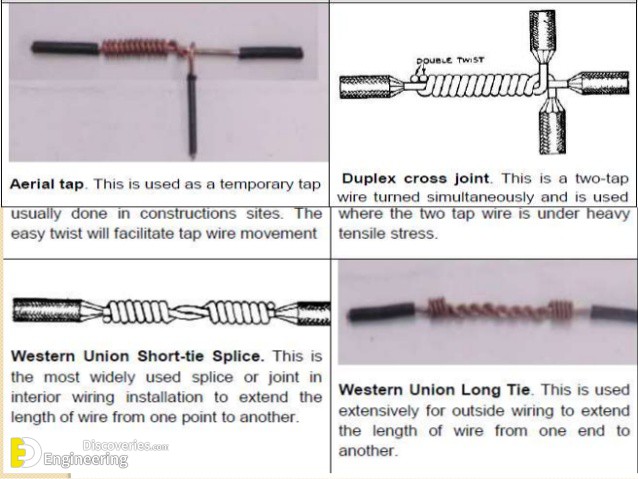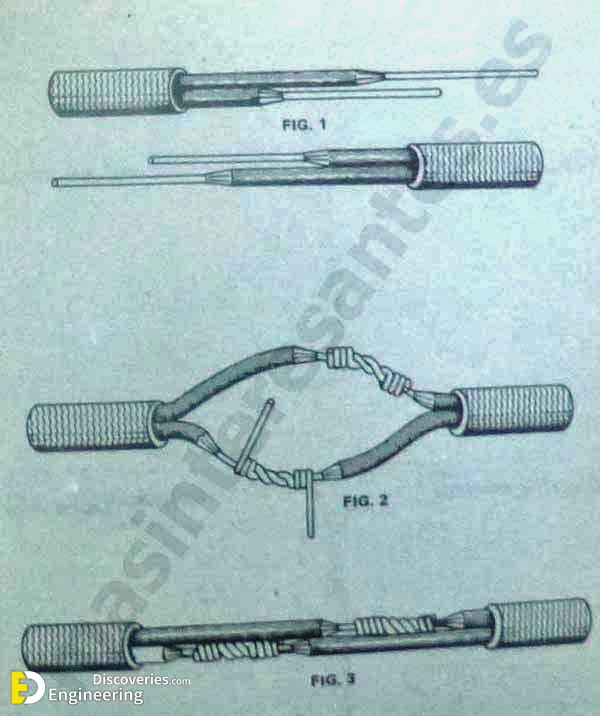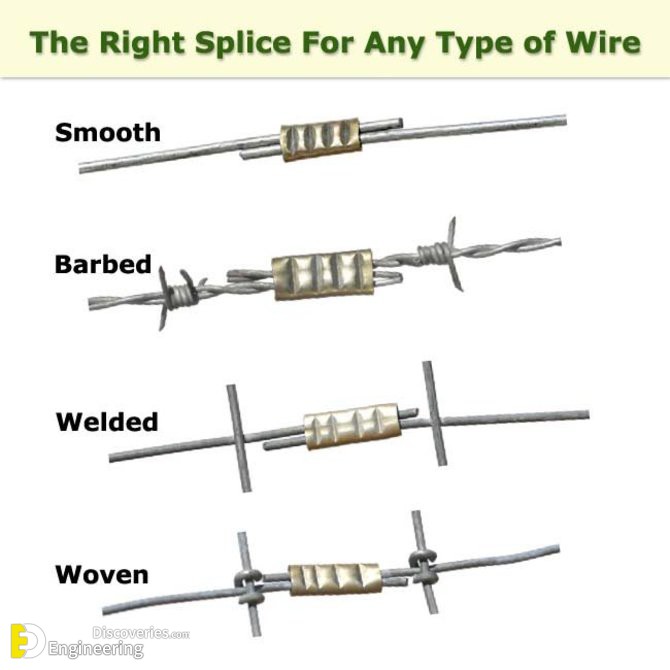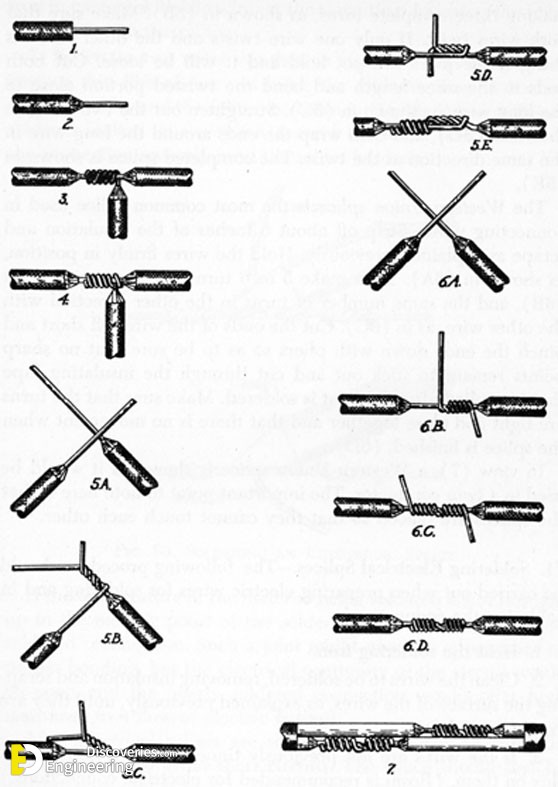Knowing how to join electrical wires together is essential for both building and repairing circuits. Not using the correct type of electrical joint can result in a useless circuit, at best, and a dangerous one, at worst. There are a few different types of wire joints, alongside various methods for holding wires together.
Three Types Of Cable Joints
There are three main types of electrical joints, also known as splices: The Western Union splice, the tap splice, and the fixture splice.
1- The Western Union splice connects two conductors together and is particularly useful in repairing a broken wire. The two wires are trimmed of insulation, then each is wrapped around the other six times.
2- A tap splice connects a loose wire to the conductor at an angle, typically resembling a “T” shape. They are named tap splices because the loose wire can then “tap” the flow of the conductor. The wires of the loose wire are wrapped around the conductor, first with one on one side and then with five or more on the other.
3- A fixture splice connects two different conductors and can be called a rat tail splice. The two exposed wires must be twisted together with a plier, then bent into place.
Extra Steps
After forming a wire splice, it’s highly recommended to solder it in order to secure. A good wire splice will hold without a solder, but the solder adds an important backup. After a splice has been soldered, it should be covered with electrical tape. This acts as a replacement for the wire insulator and keeps the wires safe from catching on fire.
Other Methods Of Joining Wires
Wires can also be joined with devices called wire nuts, screw terminals or crimp connectors.
Wire nuts, also known as twist-on wire connectors, have an insulated cap and a metal inside. Two wires can be inserted into the wire nut, and once the nut is twisted, they are held in place.
Screw terminals are more commonly used to repair damaged wires. There is a metal plate inside the terminal where the wires are held. The outer part of the screw terminal is insulating plastic. The screws are tightened, which is how they hold the wire in place.

